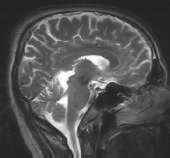Defination-
When some material cooled below the certain limit of temperature (called critical temp.) then the resistance dropped to zero.this type of material are called superconductor and this phenomenona is called superconductivity
Critical temperature-
The temperature at which the normal materials become superconductor are called critical temperature.
Persistant current
When a superconductor placed in a magnetic field and the field is removed/switched off a current is induced in the superconductor.The magnitude of current remains constant even though there is no sources of emf as the resistance of the s.c. is zero.such steady current flowing into the s.c. are called persistent current.
The magnetic induction inside the material in normal state B= meu(H+M)When temp less than tc than magnetic field inside the s.c.is zero so,B=00=meu(H+M)M=-HSusecptibility=-1. Where Susecptibility=M/HSo, it show that superconductor is a perfect diamagneticMeisneer effectThe exclusion of magnetic line of forces from a superconductor materials when it is cooled below the critical temperature(t) in a magneticfield is called meisneer effect.
Type 1 & type 2 susuperconductor
Type I
Type 1 super show complete meisneer effect .They have low critical temperatures, typically between 0 and 10 K (-273°C and -263°C respectively). As discussed above, this type experiences a sudden decrease in resistance as well as the complete expulsion of magnetic fields (perfectly diamagnetic) at critical temperature.They are also called soft superconductor.
Type I metals achieve superconductivity through slowing down molecular activity via low temperatures. According to BCS theory, this creates an environment conducive to Cooper pairing so that electron pairs are able to overcome molecular obstacles, leading to free electron flow without applied voltage.
Copper, silver, and gold are shown the type 1 superconductivity
Type II
Type 2 superconductor doesn't show complete meisneer effect.They are capable of superconductivity at much higher critical temperatures.Type II materials have critical temperatures within the 10-130 K range.
Type II materials also take on a mixed state, which contrasts with plunging resistance at Tc for Type I materials, when approaching their critical temperature. Mixed states are caused by the fact that Type II superconductors never completely expel magnetic fields.
Uses of type 1 and type 2 superconductor
1) it is used for produzction of high magnetic field in nuclear imagine system for medical dygnosis and high speed trains
2) they are used in particle acceleration
BCS theory
This theory is discovered by John cooper ,John berdean &John Rschiffer
In 1957.
This theory is based on two experimental results,the isotropic effect & variations of electronic specific heat with temperature
This theory is based on the interaction between two electrons through the intermediatory phonon.
When a free election approaches a positive ion in the lattice, there is a columb attraction force between two electrons and the lattice ion.this produces a lattice distortion which causes an increase in the density of ions in the region of distortion.the distorted region attract another free electron.thus a free electron exercts a small attractive force on another electron through phonons which is quanta if lattice vibration.
Cooper pair-----
A pair of Free electrons couple together through phonons is called cooper pair.
At normal temperature the columb repulsion between two electron is very large as compare to the electron phonon interaction force but at low temperature the electron-phonon interaction in a.c. is very large compared to columb repulsion between electron.
Formation of cooper pair
The probability of formation of cooper pair is very large when two electron have equal opposite menenta with opposite spin at T <critical temp.,the Cooper pair of electrons will have a particular property of smooth riding over the lattice inperfection without ever exchanging energy with them I.e. The Cooper pair are not scattered by the lattice point.
Applications of superconductor
Superconductors are used in many fields: electricity, medical applications, electronics and even trains. They are used in laboratories, especially in particle accelerators, in astrophysics with the use of bolometers, in ultrasensitive magnetic detectors called SQUIDs, and in superconducting coils to produce very strong magnetic fields.
Magnetic Resonance Imaging (MRI)
 |
| Above: MRI scan of a human skull |
MRI is a technique developed in the 1940s that allows doctors to see what is happening inside the body without directly performing surgery. The development of superconductors has improved the field of MRI as the superconducting magnet can be smaller and more efficient than an equivalent conventional magnet
Efficient Electricity Transportation
Superconductors have many uses - the most obvious being as very efficient conductors; if the national grid were made of superconductors rather than aluminium, then the savings would be enormous - there would be no need to transform the electricity to a higher voltage (this lowers the current, which reduces energy loss to heat) and then back down again.
Superconducting magnets are also more efficient in generating electricity than conventional copper wire generators - in fact, a superconducting generator about half the size of a copper wire generator is about 99% efficient; typical generators are around 50% efficient.
Superconducting magnets are also more efficient in generating electricity than conventional copper wire generators - in fact, a superconducting generator about half the size of a copper wire generator is about 99% efficient; typical generators are around 50% efficient.
Superconducting Maglev Trains
While it is not practical to lay down superconducting rails, it is possible to construct a superconducting system onboard a train to repel conventional rails below it. The train would have to be moving to create the repulsion, but once moving would be supported with very little friction. There would be resistive loss of energy in the currents in the rails. Ohanian reports an engineering assessment that such superconducting trains would be much safer than conventional rail systems at 200 km/h.









0 Comments